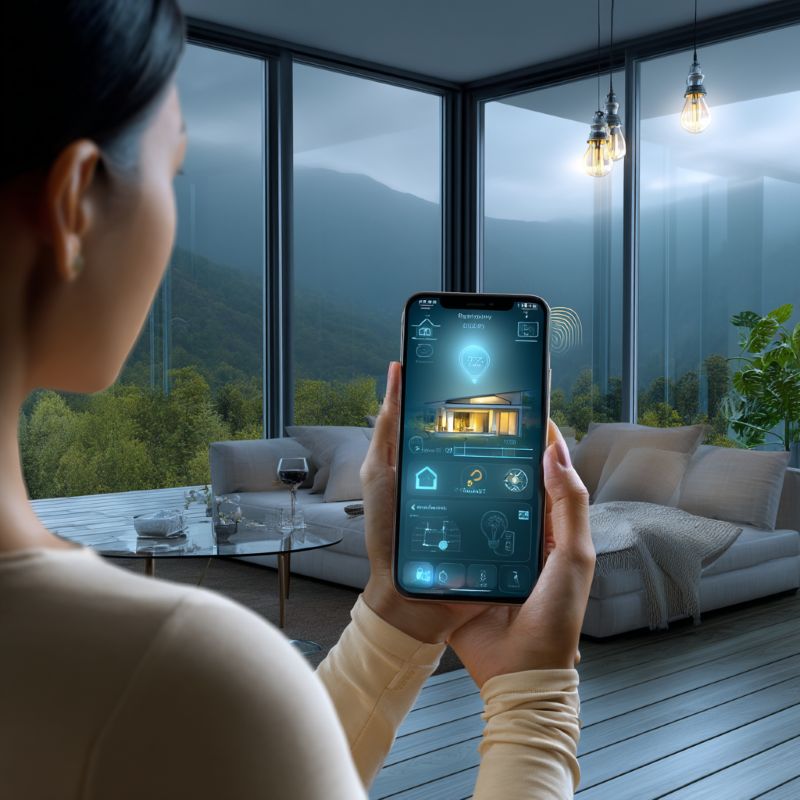AI Smart Windows: Slash Energy Bills & Maximize Daylight
Learn how machine-learning smart glazing balances natural light and energy efficiency—enhance comfort, lower your bills, and control windows intelligently.

If your windows could think, they’d dim themselves on scorching afternoons and open up to every golden sunrise—no remote required. According to the U.S. Department of Energy Smart Buildings Report, up to 30% of a building’s energy use comes from heating, cooling, and lighting—and smart windows can cut that by nearly 20% through dynamic solar control.
Traditional static glazing forces a trade-off between glare control, heat gain, and daylight. AI-driven smart windows, powered by machine learning, monitor sunlight, temperature, and occupancy in real time—adjusting tint levels for optimal comfort and minimal energy consumption, all automatically.
In this in-depth guide, you’ll explore how these advanced fenestration systems work, the core machine-learning algorithms involved, key benefits for buildings of all types, ROI returns, implementation strategies, integration with building management systems, cost analyses, and expert insights on future trends. Let’s open the pane to intelligent daylight.
How AI Smart Windows Work: The Technology Unveiled
AI-driven smart windows integrate electrochromic or suspended-particle devices with onboard sensors and algorithms. A full overview clarifies:
- Sensors: Photocells and thermistors gauge solar irradiance, outdoor temperature, and indoor light levels.
- Actuators: Electrochromic coatings alter opacity; suspended-particle devices align molecules under voltage for tint.
- Machine-Learning Core: Predictive models learn daily sun paths, weather patterns, and occupant behavior to preemptively adjust tint.
Together, these components create a responsive glazing system—now let’s examine the critical role of machine learning.

Machine Learning Algorithms Behind Tint Control
The heart of smart windows lies in algorithms that process streams of sensor data. Common techniques include:
- Supervised Learning: Models trained on historical climate data predict optimal tint levels for specific times of day.
- Reinforcement Learning: Windows receive “rewards” (energy savings) for effective tint adjustments, refining strategies over time.
- Edge Computing: On-glass controllers execute models locally for rapid response, minimizing cloud dependencies.
These AI models continuously improve, ensuring that daylight and energy targets remain in balance—let’s transition to the tangible benefits next.
Daylight Optimization: Health and Productivity Gains
Natural light influences circadian rhythms, mood, and performance. AI smart windows:
- Maintain Uniform Illumination: Prevent hot spots and dark corners without manual blinds.
- Reduce Glare: Dynamic tinting protects eyes and screens, enhancing comfort.
- Support Wellness: Studies link consistent daylight to 15% productivity gains in offices.
With these wellness dividends, smart glazing goes beyond energy savings—now consider the direct impact on building HVAC demands.

Energy Savings and HVAC Load Reduction
By modulating solar heat gain, AI windows:
- Lower Cooling Loads: Tinting reduces HVAC runtime during peak sun hours.
- Capture Passive Solar Heat: In winter, windows remain clear to admit warmth, cutting heating costs.
- Balance Lighting Energy: Daylight harvesting systems dim electric lights, saving up to 10% on lighting.
Integrated with building management systems, smart windows become active participants in climate control and lowering energy consumption.
Implementation Strategies for Retrofits and New Builds
Adopting AI smart windows requires careful planning:
- Site Analysis: Model solar exposure, orientation, and local climate.
- System Selection: Choose electrochromic or SPD glazing based on response time, optical range, and cost.
- Integration: Link window controllers to BMS via BACnet or Modbus for unified operation.
- Phased Deployment: Start with high-glare facades, then expand across the building.
- User Training: Educate occupants on override controls and feedback mechanisms.
A strategic rollout ensures maximum ROI and user buy-in—next, we’ll explore cost considerations in depth.
Cost-Benefit Analysis: ROI of Smart Glazing
Initial costs for AI windows run 2–3× higher than conventional glazing, but lifecycle savings offset capital outlay:
- Energy Bill Reductions: Up to 20% annual HVAC savings.
- Maintenance: Low calibration needs; electrochromic coatings last 20+ years.
- Incentives: Tax credits and rebates for energy-efficient upgrades.
- Property Value: Buildings with smart facades command higher leases and resale premiums.
Together, these factors yield payback periods as short as 5–7 years in many climates.

User Experience and Occupant Comfort
Beyond metrics, occupant satisfaction matters. Smart windows:
- Eliminate Manual Blinds: Simplify workspace and residential privacy control.
- Offer Personalization: Mobile apps let users adjust tint within comfortable ranges without compromising overall energy goals.
- Enhance Aesthetics: Sleek, frameless integration preserves modern architectural vision.
A well-configured system sparks enthusiasm among tenants and homeowners alike.
Industry Insight: Smart Window Adoption Trends
Early adopters at Affordable Windows report that “installing AI smart windows in 25% of this years window replacement projects, led to a 12% boost in profit over 8 months,” highlighting the value of intelligent facades.
Maintenance and Long-Term Performance
Smart glazing requires minimal upkeep:
- Periodic Sensor Calibration: Ensure accuracy of light and temperature readings.
- Firmware Updates: Keep machine-learning models current with cloud-based improvements.
- Visual Inspection: Annual checks for seal integrity and glass surface quality.
This low-maintenance profile contrasts sharply with mechanical shading systems that require frequent repairs.
Future Outlook: Next-Gen Smart Facades
Emerging innovations promise even greater capabilities:
- Self-Learning AI: Windows that autonomously adjust based on occupant biometrics (e.g., heart rate).
- Transparent Photovoltaics: Energy-harvesting panes that generate solar power.
- Biophilic Integration: Smart windows that display natural scenes or dynamic art for mental health benefits.
These advancements will redefine the role of windows in building ecosystems.
Ready to Embrace Intelligent Daylight Control?
AI-driven smart windows merge machine-learning sophistication with tangible comfort and energy gains—ushering in a new era of responsive architecture. From algorithmic tint strategies to seamless BMS integration and compelling ROI, these systems deliver on the promise of sustainable, human-centric design.
Which smart window feature will you prioritize first to elevate your building’s performance and occupant well-being?
Popular Articles
Cooler Master H612PWM Review: Top Performance & Quiet
Corsair Dominator Platinum: High-Performance RAM
Revolutionizing CPU HSF Testing: New Techniques & Insights
Thermaltake Element V Black Edition Review: Ultimate Performance





